FISH [R]EVOLUTION: FROM THE TIMES OF THE ROMAN EMPIRE TO CONTEMPORARY PORTUGUESE CHEFS
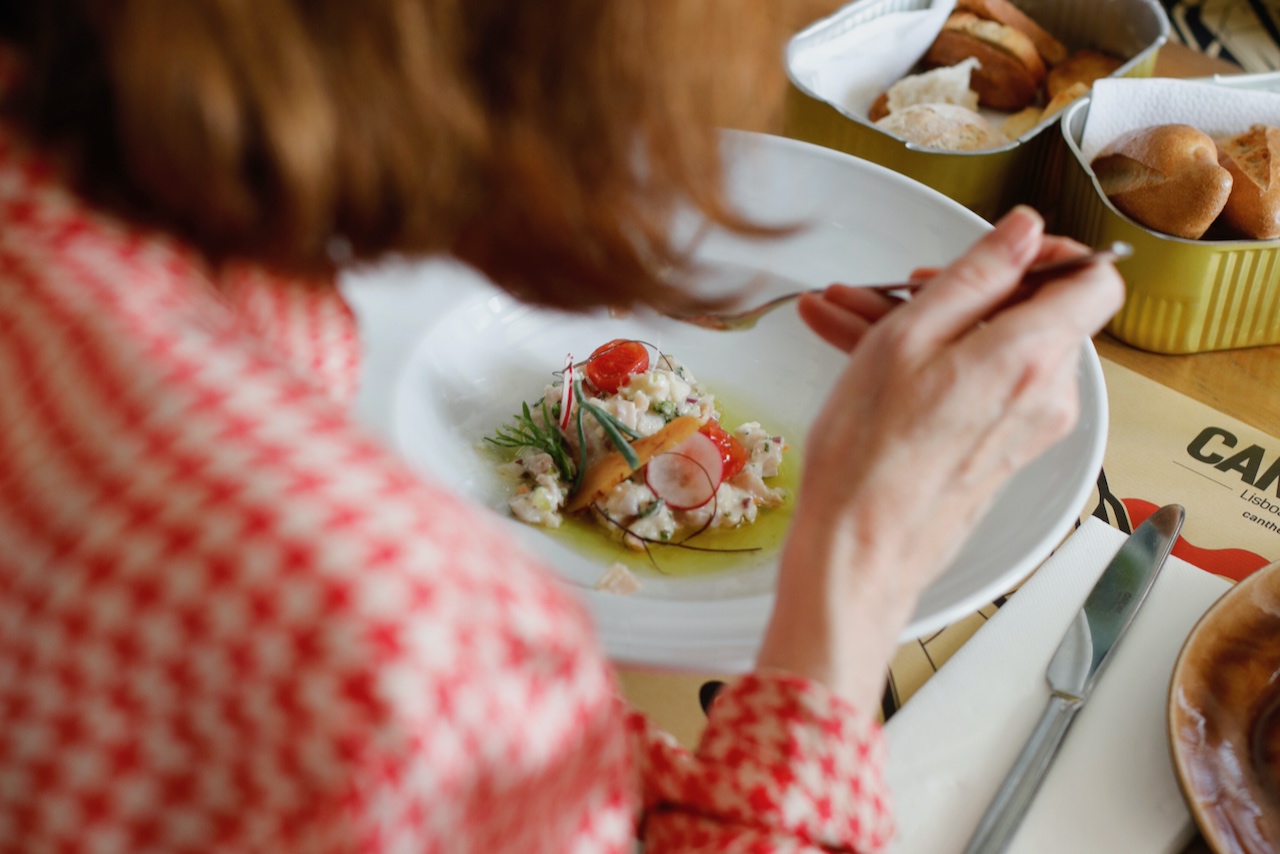
One of the fish courses during our Umami Garum Lisbon Food Tour
Portugal is the second largest seafood consumer in Europe, beaten only by Iceland. It is also one of the largest fish consumers in the world, a fact that is explained by the Portuguese following the Atlantic diet.
However, in the so-called “developed world”, knowledge about fish seasonality, different cooking methods and the individual characteristics of the distinct fish species is scant.
Fish is not only a filet and neither is it the smelly, slimy and bony ingredient that strikes fear into all of us.
Considering some Portuguese contemporary and historical inspirations, such as Portuguese modern chefs, as well as methods of preparation common in Lisbon back in the day of the Roman Empire, we wish to celebrate not only fish diversity but also to argue that there is so much more to fish than filets and why this view should become our ethical mission. A mission that can in fact take our gastronomic experience to the next level!
For now, let’s start by looking at some of the wrong assumptions that have indeed been shaping the way we perceive fish.
Seafood seasonality
Romans did it better
Fish is rarely seen as seasonal these days. When we think of the many different ways that humans have historically relied on nature for food, fishing is often forgotten.
The reality is that marine fisheries are more susceptible to seasonal fluctuations than many other major food sources. Over time, and due to a number of reasons, we’ve simply found it convenient to overlook that fact.
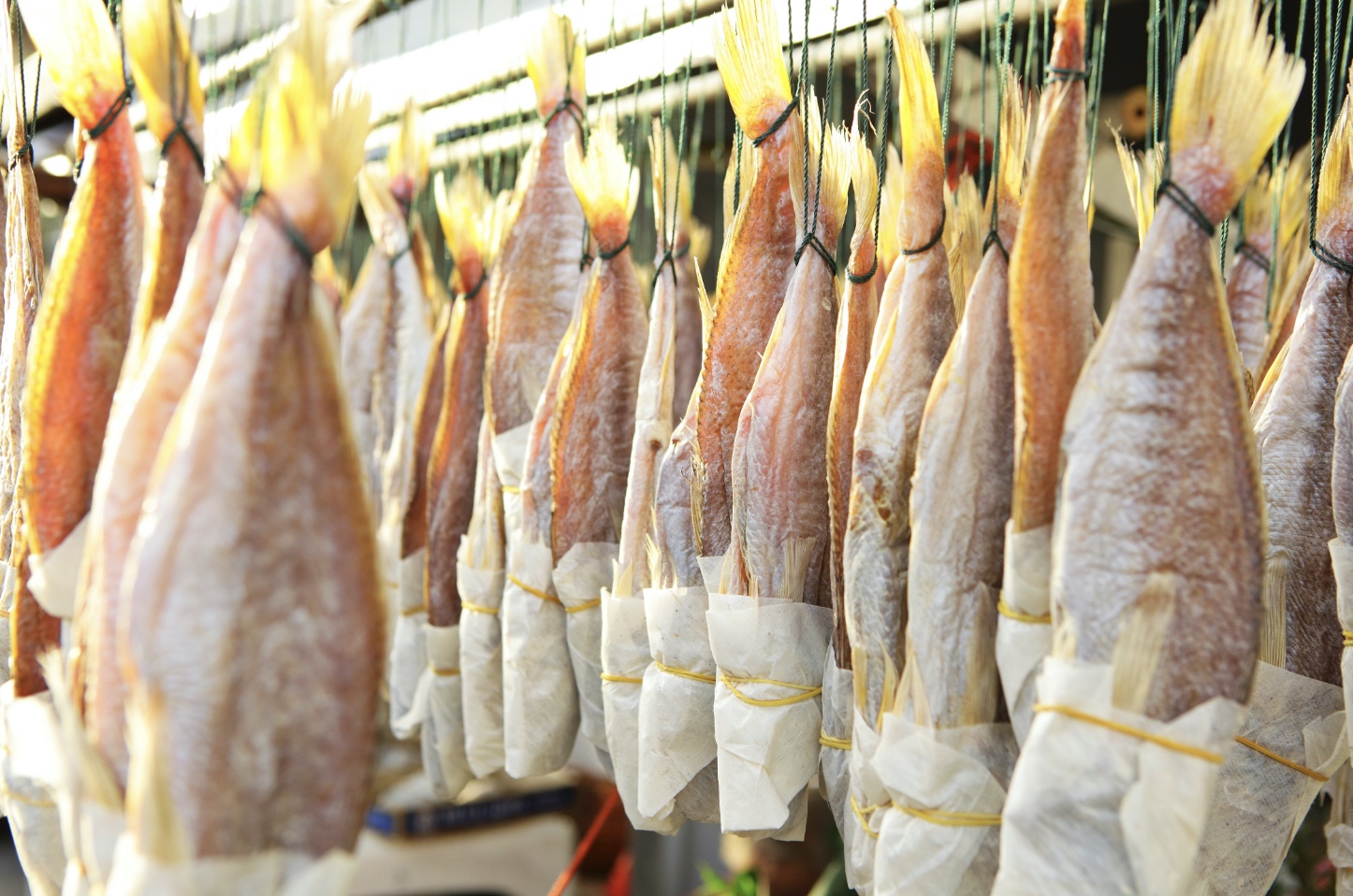
Aging fish helps intensify the flavor and improve the texture of the meat
Before freezers were invented and eventually became common in the fishing industry, fish seasonality was naturally taken into consideration by the world’s diet. The entire chain, from suppliers to stores and finally households, just couldn’t overlook that fish was a seasonal product.
Back in Roman days, between the 3rd century BC and the 4th century AD, in what is now Greater Lisbon, fish seasonality and the abundance of some resources during short periods of the year, in contrast with other times with greater limitations, quickly invited the Romans to develop specific processing techniques which became traditional. Those allowed for the preservation of excess quantities of fresh fish for storage or transport, and by consequence, to install a zero waste philosophy which translated into using all the fish. The two most important resources which assisted in this traditional fish processing technique were salt and the sun.
Unfortunately, despite this strong tradition of fish conservation, Portugal’s cooking methods and these practices were gradually lost. There are some localized exceptions, such as muxama dried tuna in the Algarve region and the ubiquitous canned seafood which features several catches and seasonings.
With time, half of the world has developed the wrong perception that fish is an unchanging and always available commodity.
But this is about to change!
What should we keep in mind in order to respect fish seasonality?
Unlike vegetables, seafood seasonality is not dependent on weather. To fish sustainability, we ought to capture the fish at its peak season, when there is more abundance.
Unless you are directly involved in the fishing industry or live in a coastal community, chances are you are not too familiar with this.
The seasonality of fish has a direct impact on its sustainability and quality. But how?
If fish is harvested during the spawning season, stocks could diminish. As a direct consequence, we end up being more likely to buy from distant sources, raising the true cost of the fish we purchase, which has now increased its price due to added transport and preservation.

Fishermen at Costa da Caparica beach at the end of the day
The advancement of freezing technology masks seasonal variations in local fisheries, and honestly, the quality can’t simply be compared with that of local fresh fish. Not only because of all the processes which involve freezing and thawing repeatedly, but also because the fish hasn’t been captured during its optimal state. For example, during optimal state the fat content of the fish tends to be high, guaranteeing good texture and flavor, but that’s just not the case when we end up capturing fish any other time of the year
Consider Portuguese sardines as a caricatural example: the prime season of this fish takes place between June and September and this is when you will see the Portuguese eating them fresh and simply grilled with a sprinkle of salt. At their prime, sardines are juicy and tasty, with a generous layer of fat sitting underneath the skin and the depth of their flesh is far thicker. Outside of this period, locals tend to shift to other fish species or even canned sardines, which in fact represent another way of not only preserving the fish but also developing new flavors.
On the other hand, switching to seasonal seafood will cause dramatic changes at several levels: ecological, economic, and in terms of quality, but will also work as a creativity booster in kitchens, linked with the fish cooking techniques we present below!
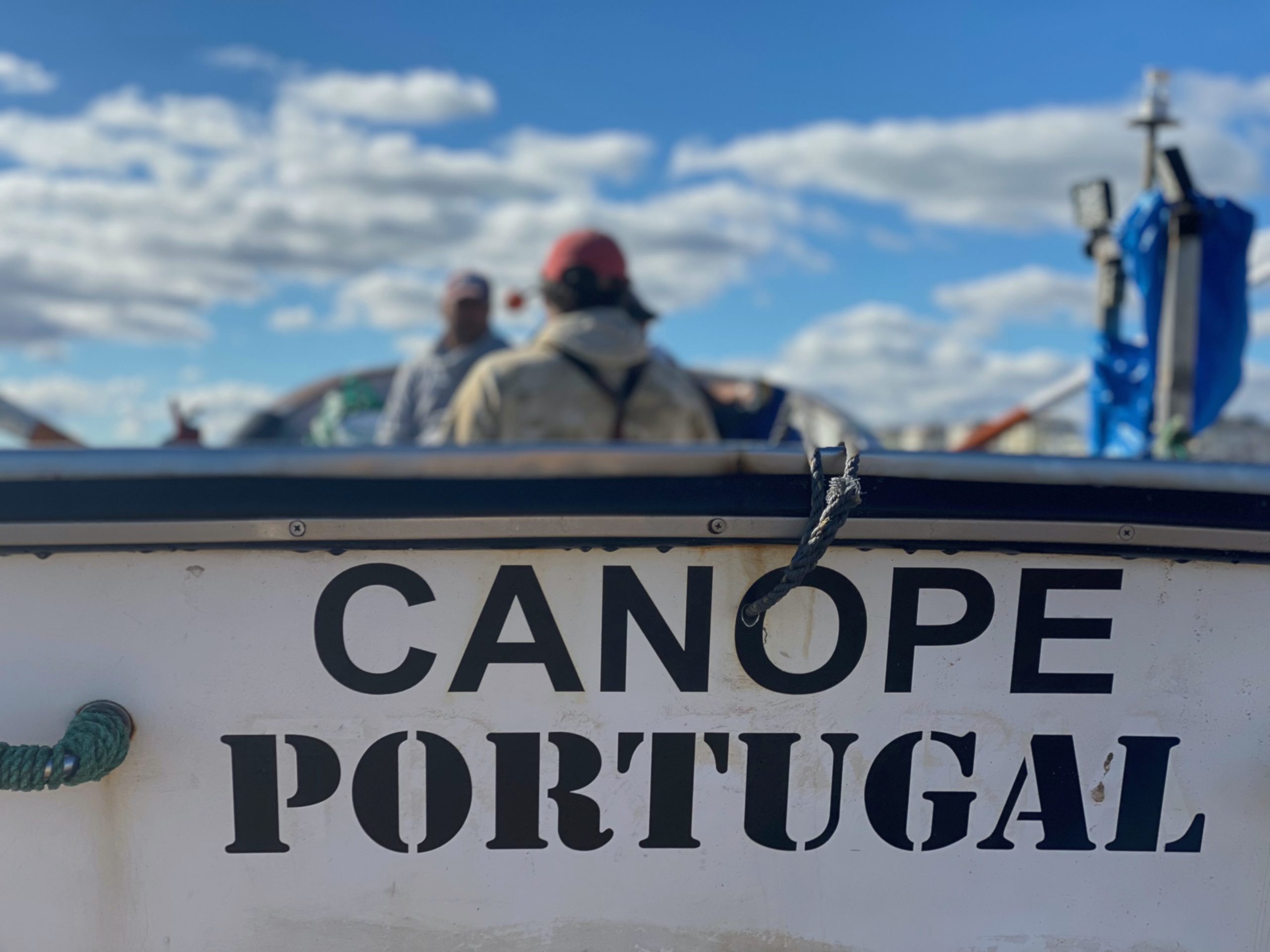
Typical Portuguese boat used on trolling fishing at Costa da Caparica
The benefits of buying the “fish of the day”
Our seafood consumption has gone from “fish of the day” to “fish of whenever”. But sticking to seasonal seafood would promote a cascade of changes at different levels!
Firstly, we would only be buying fish at its prime, which is essential not only when we want to cook it but also, and arguably even more, when we’d want to preserve it.
This would compel fisheries to diversify their target species and distribute fishing impact more evenly across the underlying marine ecosystem. As a consequence, this balanced harvest strategy would mitigate part of the adverse ecological effects of fishing and would support sustainable small local fisheries.
Economically speaking, seasonal availability could make it easier for fisheries to withstand fluctuations in specific stocks. The normally high prices for seafood during peak fishing seasons could become more consistent and less volatile due to the availability of abundant catches.
But a lot goes into making sure that our environment remains healthy for future generations – including how we fish! The ability to rotate target species throughout the year is a very important factor in favoring smaller-scale fishing operations. These types of fishermen are perceived as being more energy efficient and environmentally conscious than larger-scale ones.
Finally, in a smaller context, the promotion of seasonal seafood would present new marketing opportunities for fish species that aren’t considered “mainstream” and are currently treated as bycatch.
Overlooked fish species
While a world of delicacies lies in the oceans, much of the western world limits itself to a few widely eaten species.
In fact, the fish species’ name determines its perceived value and price. We have created a hierarchy of fish species, based on their economic value (as we in fact do for everything in the world). For instance, there are more than a hundred different species of snapper worldwide, yet only a handful are considered to be the most saleable based on consumer acceptance of the name of the fish.
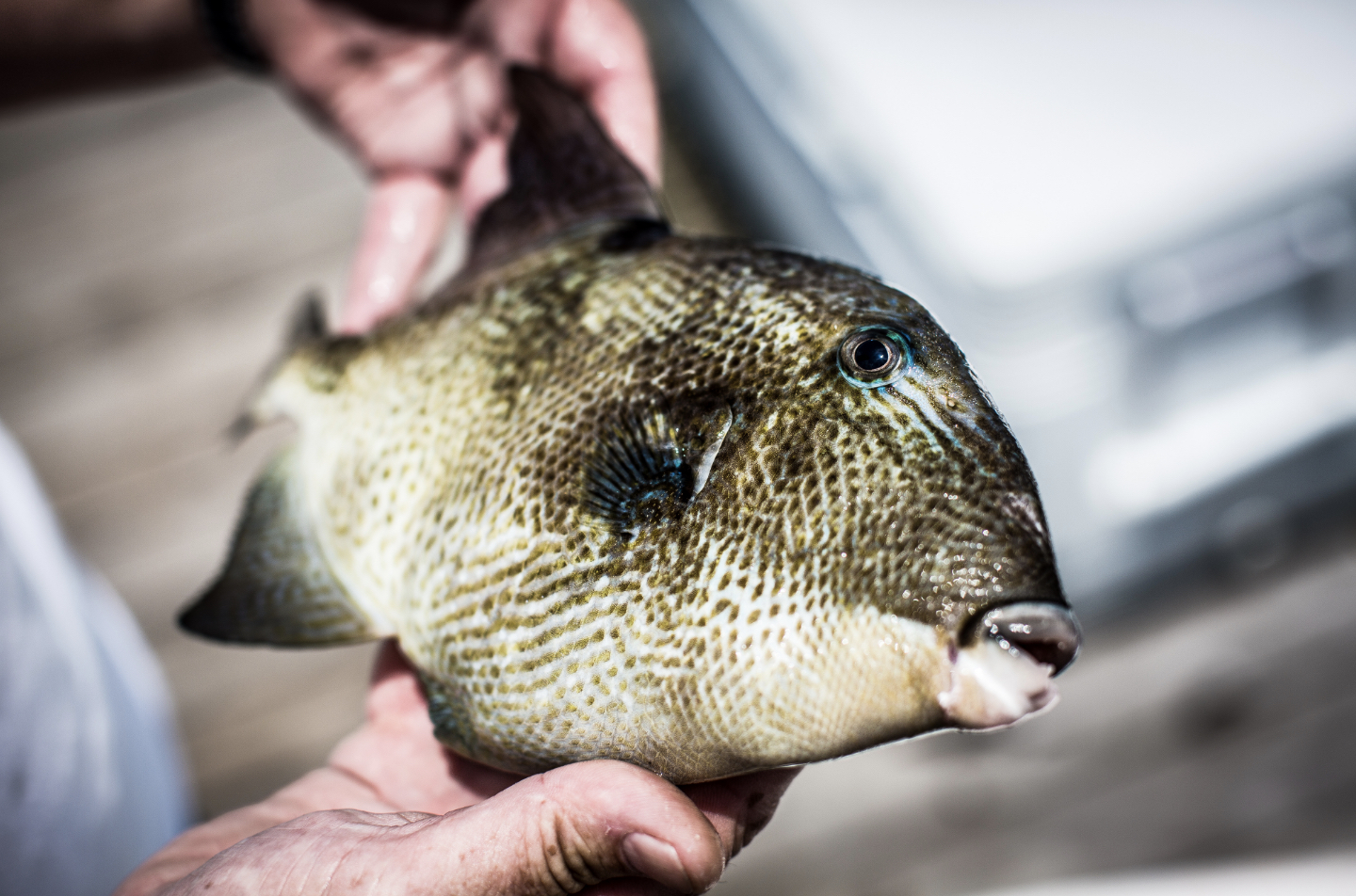
Triggerfish from the Azores (in Pico island)
In Portugal, grey triggerfish (balistes capriscus) which at the right time of the year can be far cheaper than common tuna steak, will be the last to sell, regardless of the amazing recipes we can prepare with it, just because tuna is more desirable and somehow perceived to have a “higher status”.
Some fish may not carry as much cultural significance as others, as is the case of taínha (chelon labrosus), known in English as thicklip grey mullet. This is a fish found on rocky bottoms, which in Portuguese popular culture has the reputation of a “dirty fish” but that, in Brazil, happens to be more expensive than sea bass.
While informed purchasing choices are typically influenced by labeling awareness, they also depend on the consumers’ ability to identify and distinguish the fish species available on the market, something that to date remains notably unexplored.
If we develop critical thinking, curiosity and interest, we can question this perspective and understand that most of what we believe to be “reality”, is in fact a social/cultural/economical construction and it can easily be changed – because, by doing so, we will eat much better and live more sustainably!
On our Umami Garum Food Tour, we have decided to work with chefs who wish to promote less celebrated fish species, using those that aren’t usually valued by the consumer. These alternative fish species are particularly relevant when the more commonly highlighted fish is either seasonally unavailable or is difficult to source in nearby waters.
As foodies, we will discover that lots of delicacies have been away from our palates because they have been part of a process – mostly economic, but sometimes also historical and social – that turned them into undervalued species.
But for now, let’s address another challenge that contributed to the misconception that fish is not as resistant, flexible, and manageable as meat, and so it has wrongly been believed to be more limited regarding its cooking potential. We’re referring to the short period of time during which fish stays fresh after being captured!
The short shelf life of fish
Once a fish comes out of the water the clock starts ticking and the prime conditions at which the fish has been caught during high season starts to fade.
One of the biggest causes for this is the way fish is captured and stored. Most fish we see on retailers’ shelves is fish that has been heavily washed under running water. The other problem is the number of days fish is stored and the many hands that end up handling it.
The “wet fish” washed under running water ends up retaining a percentage of that moisture. This is the moisture that promotes bacterial growth. What we usually think is the right thing to do – to wash a fish to remove waste – only ends up majorly contributing to its short shelf life. This situation escalates if we are talking about fish that is left inside packaging, with condensation forming on the inside of the storage container.
In Portugal, people are very used to buying the catch of the day, and we are known for having one of the freshest fish in the world. So for us, the problem is not so much the days that the fish has been stored – something that can be a problem in countries where the coastline and fishing are not so important – but nevertheless, the way we handle the fish could certainly be improved.
How to overcome this?
Simple! By handling fish correctly when buying it and by starting a revolution in how you perceive fish, using methods of dry-aging and curing fish which promote zero-waste and delicious culinary experiences!
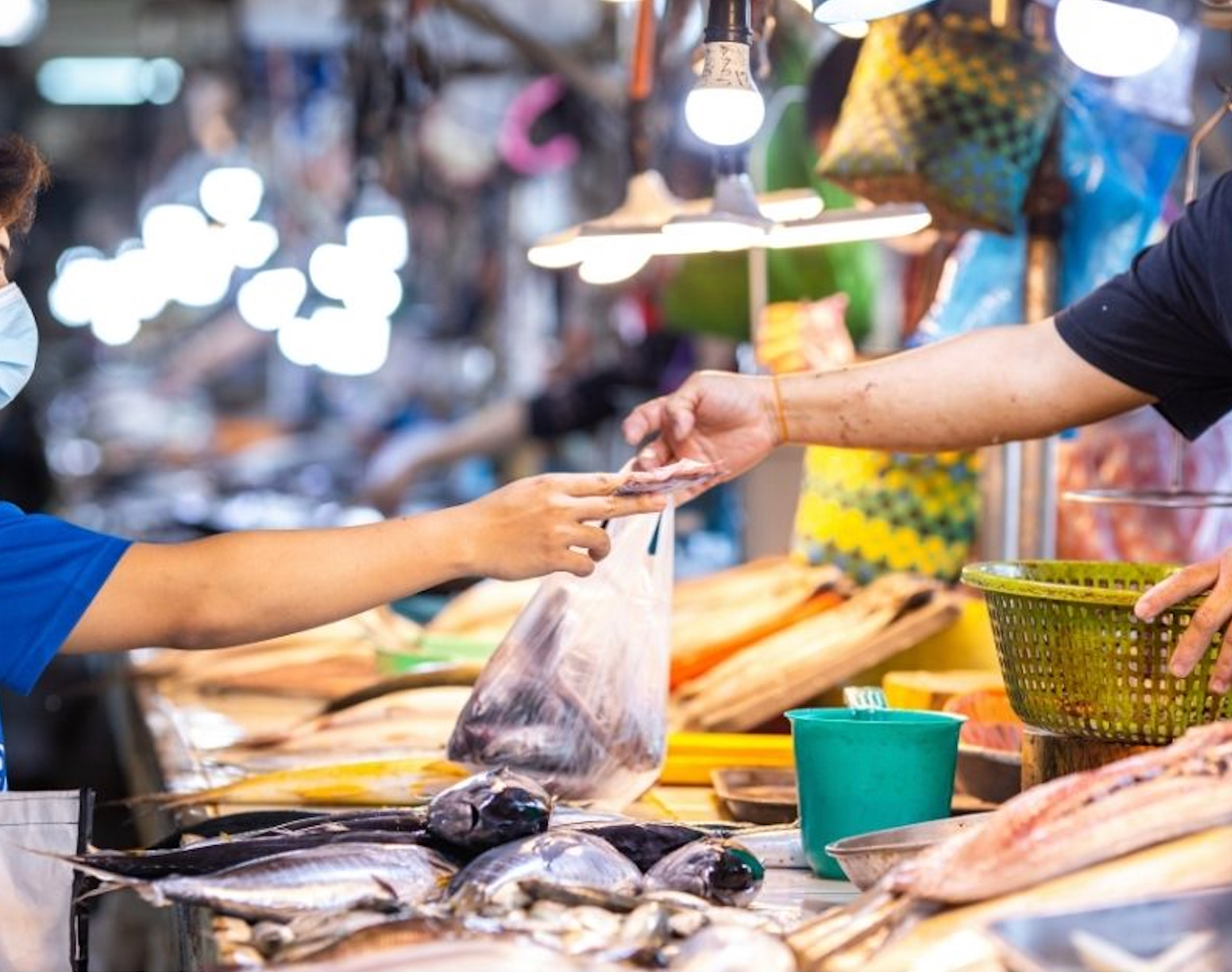
Talk with your fishmonger
To handle fish correctly means, to break down the problem of excess moisture, dry handling the fish throughout the commercial process, associated with equivalent good preparation and storage practice at home can do a lot.
What I now do, when I purchase my fish whole, is to ask the fishmonger to scale and gut it without the use of water. If this is declined then it is best to scale and gut the fish by yourself at home. From my personal experience, until now, this attitude only had positive aspects, leading me and the seller to have a short chat about the reason why I asked for this. Often, this informal conversation seemed to produce immediate effects on the professional who has frequently shown curiosity in knowing more and eventually to even try it at home too.
Believe me, if handled correctly, the fish will smell less than one that has already been washed with tap water and wrapped in plastic to be taken home.
Furthermore, as we will see and as you can taste during our Umami Food Tour, these principles of moisture removal are in fact at the base of some delicious artisanal methods of dry-aging and curing fish nowadays.
New thinking about fish
The question is: how do we promote such a major shift in our purchasing and fish-eating habits?
How can we overcome some of the misconceptions we have about fish, which are blocking us from seeing it as a versatile, delicious, and resourceful ingredient? As delicious and multifaceted as meat! (I know, you are very skeptical reading this…)
The answer would materialize inside our kitchens, using some new techniques and ways of thinking!
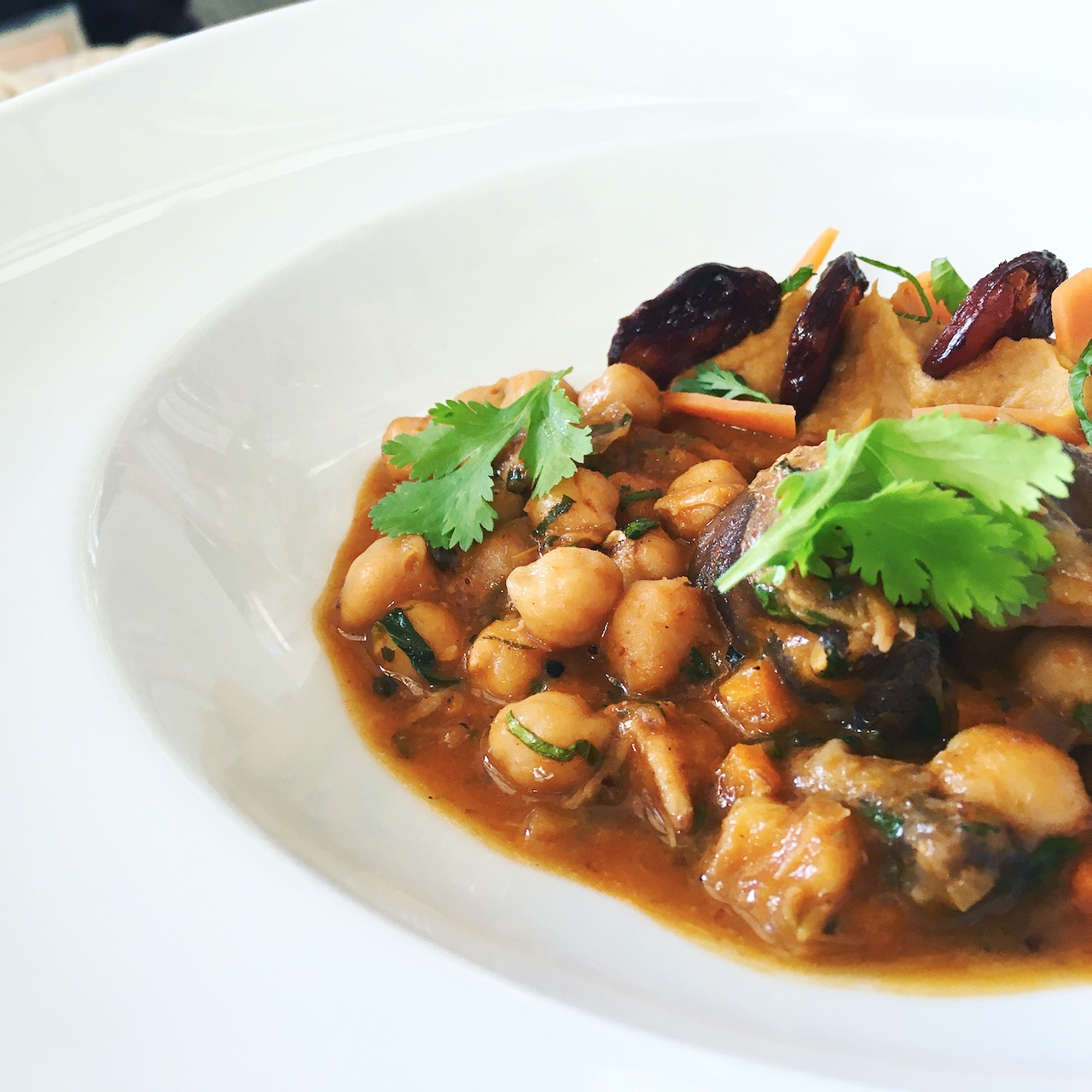
One of the courses during our Umami Garum Lisbon Food Tour
Perceive fish as if it was meat
Those who know me are aware that I am not very keen on dichotomies in concepts. Dichotomies are intellectual and cultural constructions or categories that erase what is in between and tend to look at phenomena as discrete rather than continuous, losing a lot of their diversity, richness, and complexity.
But, as provocative thinking and to use the binomial of ‘feminine’ and ‘masculine’, I would like to ask you:
Don’t you think that, at least western society, perceives fish as more feminine, more delicate and elegant than meat?
It’s a fact that, when cooking, we dare to do way less with fish than we do with meat.
On the other hand, in many contexts, fish is seen as an expensive ingredient that offers little potential beyond filets. It’s boring, I agree! But cooking filets is just one of the techniques, among so many others that can indeed be done!
So, following the provocation, I invite you to disregard those dichotomies and to think of fish as meat. What would change?
Would we be able to cure a fish as we do with pork in order to produce the equivalent of cured ham? Would that be possible? And tasty?
Would we be able to follow a nose-to-tail approach with fish, as we do with pork (and in Portugal, with the salted dried cod)? Would it be useful and meaningful to section the fish into several parts as we do with a cow or a pig and understand its different parts?
Would it make sense to produce fish-chorizo and other types of fish-offal charcuterie?
The answer is YES! To everything! And it’s delicious!
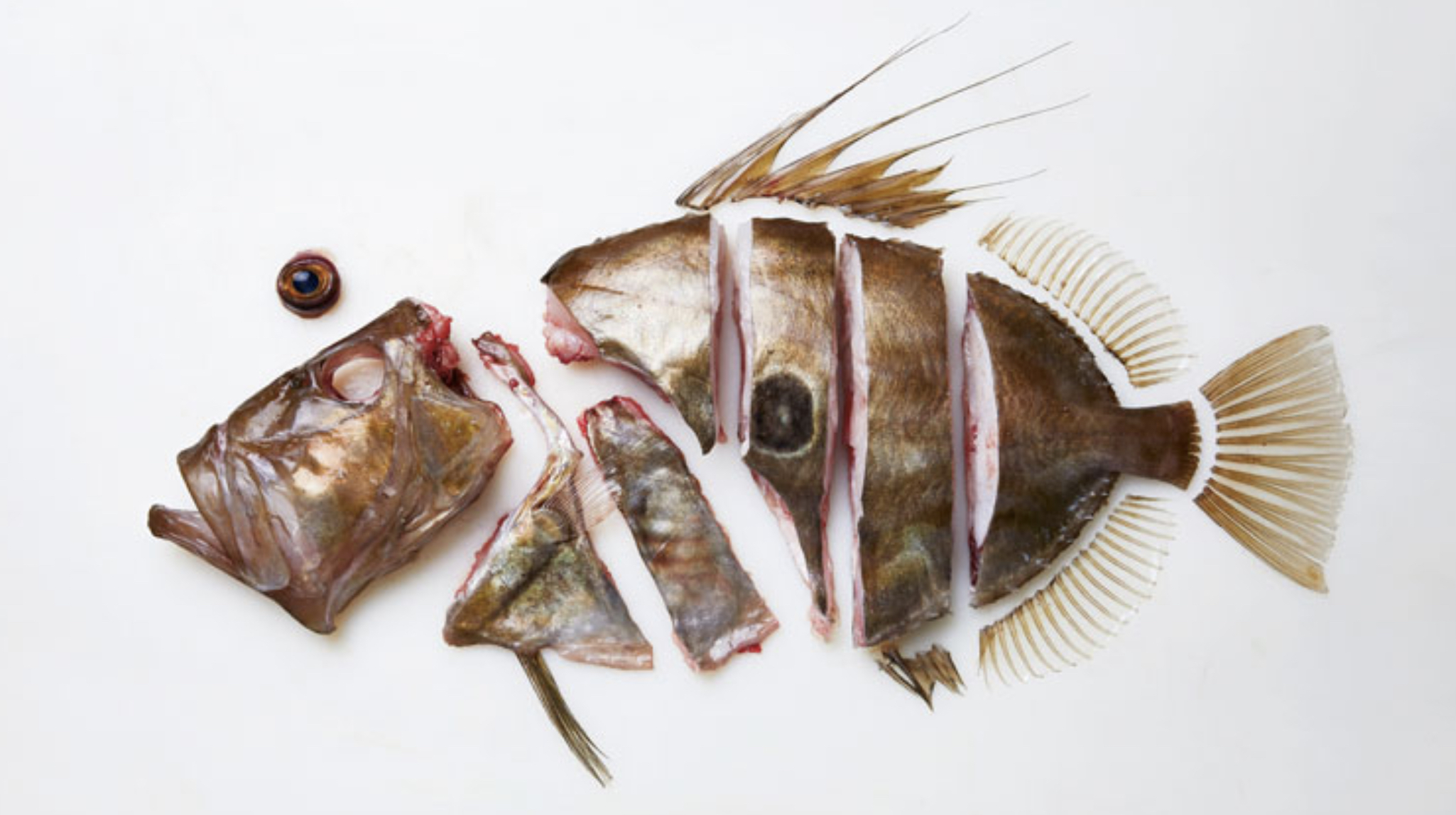
Different sections of a John Dory © Josh Niland
Thinking of fish as meat enables us to dig into the endless resources that are at our disposal when it comes to meat preparations and methods that enhance flavor and texture, including dry-aging and curing.
Briefly, in a controlled environment, this technique extends for much longer the durability of fish at its peak quality, while promoting certain nuances in the fish flavor profile, as we explore further below.
The key to making the best of every fish is understanding its individual characteristics and its different parts; then learning how it should be preserved, transformed and cooked, in order to make use of the potential excellence of every fish.
As for foodies, a world of new experiences opens up in front of our eyes. It’s mind blowing and your taste buds will love it!
But this new way of thinking about fish is also the vehicle to far more consideration given to the parts of a fish that would traditionally be considered ‘waste’.
Minimize fish waste and maximize flavor
Particularly in western society, the “nose-to-tail” approach (or shall we say “nose-to-fin”?) is often ignored when fish is considered at home or in restaurant cooking.
Apart from the salted dried codfish – which the Portuguese, for instance, consume in more than 1000 recipes, making use of all parts of the fish, including for example the cheeks and the swim bladder transformed into delicious and popularly praised dishes – few are the fish species that are fully used in western cuisine.
Surprisingly (or perhaps not!) it is accepted and even taught in cooking schools that a round fish will yield anywhere between 40 to 45 percent!
What we should do, following our reasoning, is to move our attention from the 40 percent that has an array of recipes to the majority of the fish which also offers a great amount of culinary potential, as we can attest and taste during our Umami, garum, and dry-aged fish food tour. (link).
Whole fish cooking includes fish hearts, spleens, the tuna muxama (tuna loin with a high concentration of blood, often discarded from a tuna steak) and fish blood, to name just a few.
The key tools to achieve this are cooking fish as a whole, as well as curing and dry-aging, enhancing both its taste and consistency by reducing moisture in a controlled environment.
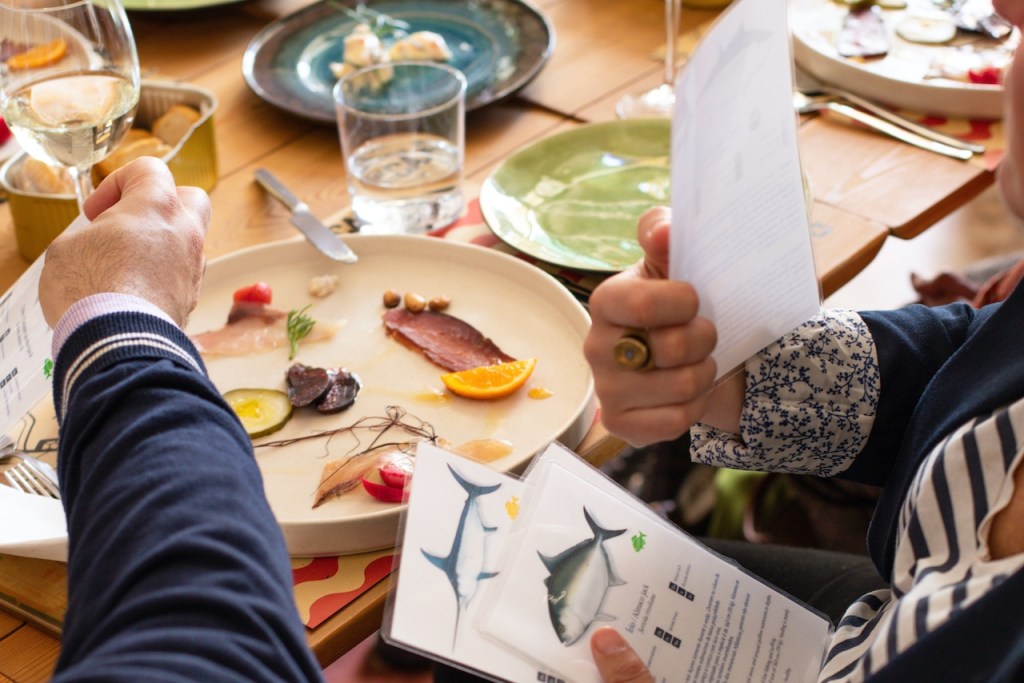
Tastings during our Umami Garum Lisbon Food Tour
In fact, these practices have been around for more than one thousand years in several parts of the world, namely in Lisbon around the 5th century, during Roman times! These techniques are now being revisited, perfected and presented in a series of culinary events during our Umami Garum Lisbon Food Tour.
Finally, this is also an ethical and sustainable question when dealing with such a delicate protein as fish, which is very prone to spoiling. If we want to have fish as part of our diet, it’s our mission to understand the preservation methods that are needed as part of our culinary artillery to combat waste.
Article and photos by :
Sílvia Olivença (anthropologist and food guide/CEO at Oh! My Cod Ethnographic Food Tours & Trips)
